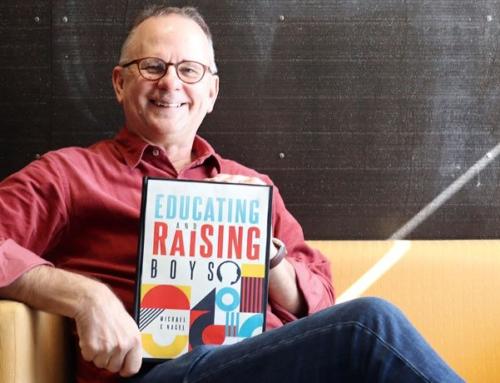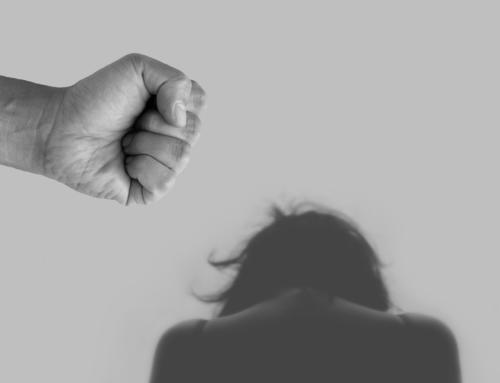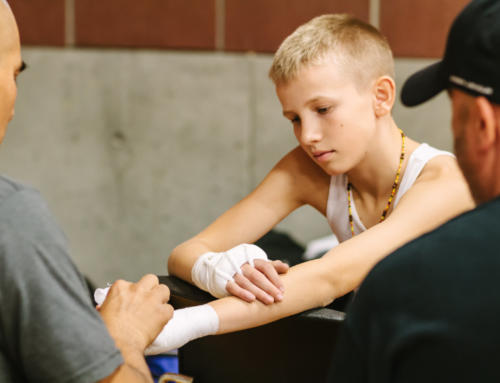The significance of Men’s Health Week is now well-established. There’s a growing awareness of men’s unequal propensity towards elevated rates of particular illnesses and diseases. Indeed, we’ve seen in recent months that men are more likely to die after contracting COVID-19, and scientists are doing important work to explore the implication of androgens in COVID‐19 infection severity.
But beyond biological certainties, the gender gap in health outcomes is driven also by lifestyle choices and collective social norms about what it is to be a man – that is, masculinity plays a pivotal part.
Men’s disproportionate risk-taking, accidents and premature deaths, and their relative reluctance for pro-health, or help-seeking behaviours, are all implications of the social dimensions of men’s (ill) health.
As we, hopefully, start to move out of the grip of the coronavirus pandemic, there are a variety of issues that we need to retain in our conversations with and about men’s health.
Here, Monash University researchers reflect on some of the most pressing social issues and drivers, and think about ways to generate awareness or actions for preventable health problems for men.

Men, masculinity and the risk factors leading to suicide
Dr Kylie King
In 2018, there were more than 3000 deaths from suicide in Australia – three-quarters of these were by men. While the pathway to suicide is individual and complex, social factors play an enormous role in the higher risk of suicide for men. Risk factors include mental health problems, physical illness, social isolation, unemployment, stressful life events, and previous suicide attempts.
Of course, both men and women experience these factors, but they do so in different social contexts.
The higher rate of suicide deaths among men compared to women has been attributed to the use of more lethal methods, the way in which men express depression (for example, externally through anger and irritability, rather than sadness and tearfulness), increased substance use, reduced social connection, and reduced help-seeking.
Each of these factors is influenced by masculine social norms – the unwritten rules about how men should behave. Australian masculinity is characterised by a tough, laidback approach to life.
However, this masculinity also encourages men to “suck it up” and tough it out alone when they face a personal or emotional problem, and can discourage them from openly expressing emotions.
This stoicism and self-reliance can be helpful in many life situations, but it can also place men at higher risk of suicide by reducing the chance that they’ll seek the help they need, increasing unhelpful coping strategies (such as substance use), and reducing protective factors (such as close relationships).
Men’s external expression of depression can further alienate them from others when they need support the most. Some groups of men, such as Indigenous men, GBTI men, and men in some occupations are also at higher risk. Suicide prevention for men needs to attend to the social influences and contexts that men experience.

Men, mates and mental health
Brittany Ralph
Although Aussie men have long valorised a commitment to “being there for your mates”, until recently this mostly consisted of knock-off beers and lending a hand (or a ute) every now and then. The lack of emotional connectedness in men’s friendships is said to place them at greater risk of depression, heart disease and stroke, particularly as they enter middle age when life satisfaction tends to drop.
Read more: Tracing Australia’s history of fatherhood
But slowly, this is changing. Men are opening up to one another, and engaging in more intimate and communicative friendships. Research suggests this, like many contemporary forms of social change, is being led by the younger generations. Though there’s no Greta Thunberg to champion them, young men are shedding out-dated masculine tropes of self-reliance and emotional stoicism, opting instead for friendships based on trust, support and, in some cases, open expressions of platonic love.
Yet older men, too, are changing in profound and meaningful ways. As fathers, many have modelled a more nurturing version of manhood than was afforded to them. And through experiences of illness, death and divorce, they’ve begun confiding in those around them – undoing decades of social learning that relegated vulnerability strictly to the realm of the feminine.
Read more: Traditional masculinity is evolving – and young working-class men are leading the charge
This shift is by no means universal, and there’s still a long way to go. But what it signals is that the fear that used to drive men inward – of humiliation and rejection by one’s peers – is proving largely unfounded. Instead, when men ask for a shoulder rather than just a hand, their vulnerability can be met with empathy, care and, of course, a healthy dose of humour.
And this cultural shift could not have come at a better time. As we stare down the barrel of another recession, men face an increased risk of psychological distress and suicide. Being there for your mates, in the most genuine sense of the phrase, may be that one small thing that makes a very big difference.

Community sport, men, and mental health
Associate Professor Ruth Jeanes and Dr Justen O’Connor
Encouraging men to seek help for mental health difficulties has always been challenging. Mental illness continues to carry stigma within society, but this is particularly pronounced for men. Men are less likely to recognise they’re experiencing poor mental health, and reach out and connect with support services or talk to friends.
Increasingly, mental health service providers have recognised the importance of taking services to the spaces that men occupy.
Community sport is one such space where men regularly gather in large numbers, and across different age cohorts. As inherently masculine spaces, promoting mental health through community sport is not without its contradictions.
Despite shifting versions of masculinity, sport – and particularly team sport – remains a hyper-masculine space that promotes often damaging versions of masculinity based on competition, aggression and athletic ability. This can contribute to poor mental health outcomes. However, by going to the source, targeting sport represents an opportunity to break down potentially harmful norms that limit health-seeking behaviour.
Mental health organisations such as Outside the Locker Room are increasingly working with community sports clubs to deliver education that raises awareness of mental illness, gives guidance on strategies to promote positive mental health and wellbeing, and directs club members to support services. Similarly, sport is increasingly being used in initiatives aimed at supporting men’s recovery from significant mental illness, with some promising benefits.
Providing mental health support through sport can assist health practitioners with accessing the male demographic, encouraging conversations between men about mental health, as well as increasing men’s knowledge of how and where to access additional support services. Rather than requiring men to reach out, sport provides a context through which support can be directly connected to them. Mental health interventions delivered through sport warrant further attention in considering how to address stigma, and support men to engage with mental health and wellbeing.
Is footy really good for health?
Professor Richard Pringle
The World Health Organisation (WHO) proclaims that “physical activity and healthy sports are essential for our health and wellbeing”.
The WHO, accordingly, differentiates sport into healthy and, by default, “unhealthy” categories. The so-called unhealthy sports are those that many believe turn boys into men. These are the so-called masculine sports that demand pain tolerance, acts of aggression, and produce elevated injury rates – such as the high-speed collision (for example, AFL or rugby union) and combat sports (boxing and mixed martial arts).
Given the high cost of sporting injuries, estimated at A$2 billion per year, some epidemiologists now regard sporting injuries as a public health problem, and question whether the benefits of particular sports outweigh potential negative outcomes.
Of particular concern is retrospective research evidence suggesting that costs of participation in boxing, rugby union and ice-hockey might result in reduced life expectancy.
Researchers speculate that the higher rates of mortality “reflect the effect of a gradual accumulation of multiple bodily injuries during sporting activities”, suggesting that “these injuries may have long-lasting, detrimental effects in line with the generalised theory of ageing”.
Yet, the lessons learnt about how to perform masculinity in these high-risk sports might be just as dangerous and detrimental to good health, or more so, than the physical injuries.
Men embedded within these sporting cultures learn that they shouldn’t give in to pain, to use their bodies as weapons, to always strive for victory, that aggression and even violence are acceptable, and that victory or defeat should be accompanied with the consumption of alcohol.
This form of masculinity is further detrimental, given it prevents men from developing a consciousness about health and illness, so that when they get sick or are under stress, they don’t complain or seek help. It is, correspondingly, theorised that this dangerous form of masculinity is a prime factor that explains why men typically live five years fewer than women, experience more chronic illness, and are more likely to die through road accidents, suicide, acts of violence, or drug overdoses.
It’s in this light that I suggest we need to think carefully about which sports and associated cultures we believe are good for health, and that our boys (and girls) should be encouraged to play.

Men, masculinity and (un)healthy eating
Associate Professor Steven Roberts
Evidence for individuals needing to scale back meat consumption is plentiful and relatively consistent – beyond ensuring the sustainability of our planet, lower consumption (not total elimination) of red meat and, especially, processed meats, is better for our hearts, and is associated with reduced risk of cancer.
A chief and ongoing concern for health advocates is the gendered dimension of this issue. It’s long been clear that masculine norms impede making better choices in this regard, making men more susceptible to the associated health risks of eating meat. Indeed, the stereotype of men eschewing the salad at a barbecue and instead piling their plate with extra burgers plays out in research that time and again finds that, relative to women, men across many cultures have consistently lower fruit and veg intakes, and higher meat consumption.
Read more: When sex is at steak: beefing up men’s desire for meat
These behavioural patterns correlate with commitment to masculine norms, with eating meat considered by some men as a means to convey manliness. Vegetarianism, in contrast, is sometimes seen as unmanly, to the point where men will avoid eating vegetarian-option meals in public. There is thus, unsurprisingly, a clear and stark relationship between adherence to traditional masculine ideals and obesity, and its associated illness such as type 2 diabetes, heart disease, stroke, and cancer.
But masculinity isn’t uniform, and research shows that men who are attuned to newer, less traditional versions of masculinity have a weaker attachment to the notion that meat is manly. A recent Australian study makes clear that “meat still features in the food world of Australian men, but there are shifts to de-prioritise its importance” across the class spectrum. Such findings point to a possibility and need to amplify and normalise reconstructed masculine ideals that are less harmful to men’s health.
Yet, even if we tackle masculine norms, attention must then also be given to structural barriers, including the costs and accessibility of healthy food, the ubiquity and convenience of fast food, and workplace cultures where unhealthy food is frequently available, and where stress levels often are high.

Men’s risky drinking
Dr Karla Elliott
Drinking alcohol has long been seen as part of “being a man”. In Australia, men are significantly more likely than women to drink at risky levels, and are three times as likely as women to be at lifetime risk of harm due to alcohol. Hospital admission rates in Australia associated with risky drinking are almost three times higher among men aged 18-29 years.
Harmful use of alcohol has also been identified as a reinforcing factor in family violence when it intersects with gendered drivers of family violence such as rigid gender roles, men’s control of decision-making, and male peer relations that emphasise aggression and disrespect towards women.
Read more: Risky drinking among men: alcohol’s role in social interaction
Alcohol consumption poses a clear risk to the health of men and those around them, but our recent research also identified drinking as central in many men’s social interactions and connections with others.
The men in our research saw drinking as part of Australian culture, and as a default social activity for men. But they also described how alcohol helped them open up to friends about their problems, emotions and feelings for each other. What these men perceived as “risky” drinking was considerably higher than the national guidelines of no more than two standard drinks on any day, and no more than four standard drinks on a single occasion. They were also cynical about public health campaigns that encourage individuals to abstain from drinking or have low consumption.
Addressing the health risks of men’s drinking needs to take men’s perspectives on drinking into account, as well as their experiences of using alcohol for fun and to connect with friends. Finding ways for men to connect with others beyond drinking is one possible avenue for change. Another is framing campaigns in terms of risks to others, and including community members in the design of public health interventions.

(Re)approaching men’s illicit drug use
Dr Tristan Duncan
The disproportionate involvement of men in illicit drug use and drug-related harms is now well-documented. As Australian epidemiological research has repeatedly demonstrated, men are not only more likely than women to consume illegal substances, but to experience (and contribute to) problems associated with their use. Males, for instance, make up the largest proportion of drug-induced deaths in Australia (64 per cent); comprise the “overwhelming majority” of those implicated in fatal drug-driving incidents; and are more than twice as likely than women to present with substance use disorders.
So, what can be said to drive these longstanding disparities in men’s illicit drug use? Building on feminist scholarship, scholars have variously approached men’s drug use as a means of “doing” gender – a practice that enables or contributes to the performance of specific masculinities. For men living precariously in a US-Mexico border community, for example, participating in “hard” drug use was described as a means to act out and express “machismo”, and associated values of risk-tasking and outstripping others. Contrastingly, and in an Australian context, young men’s MDMA consumption has been found to enable modes of male sociality marked by intimacy, physical touch, and open communication.
Collectively, such accounts help illuminate the ambiguous, complex, and situated interplay between masculinity and men’s illicit drug use. Yet they also urge us to consider masculinity in terms of its intervention potential. How, for example, can (or should) masculinity be cultivated, reshaped, or otherwise transformed in pursuit of more health-affirming drug use encounters? What role should public health institutions and policy play in facilitating these transformations? To date, such questions are yet to receive concerted attention across Australian drug policy spheres.
In light of the enduring challenges posed by men’s illicit drug use, it is nonetheless apparent that new means of thinking through and approaching masculinity may be required.
My (Queer) Health Record?
Associate Professor Mark Davis
Gay men with complex health needs may have much to gain from My Health Record (MHR), Australia’s national electronic health record system.
MHR is said to lead to better coordination of healthcare – saving time, streamlining care, avoiding duplication, and reducing harms such as adverse drug reactions in emergency rooms. Yet, there are considerable troubles for MHR.
In 2018, MHR was linked with news media stories about data security and privacy breaches at a time of international controversy over Facebook and Cambridge Analytica. LGBTI communities were advised by health advocates that their data may not be protected from third-party uses – for example, by insurance companies, police, and commercial entities. These legal and privacy concerns intersect with myriad health disclosure issues for gay men navigating access to HIV treatment and prevention, treatment for sexually-transmitted infections, and mental health services, to name a few.
A 2018 senate inquiry led to some modification of the database, and Australians were asked if they would like to opt out of MHR. Some 2.5 million did so, underlining enduring mistrust among some members of the Australian public. We know little about who among gay men opted out, and if their healthcare and outcomes will be affected. And we don’t know if those who opted in decided to do so because their healthcare needs meant that they had no choice.
We can’t be sure if MHR is helping these men, or adding challenges of privacy, disclosure and data management to their healthcare needs. Moreover, we’re not sure if a universal, “one-size-fits-all” database can properly serve the specific needs of gay men.
MHR will likely evolve in coming years as it solves its problems and responds to changing social, economic, technological, and biomedical conditions. Data protection and security aside, for gay men, as with other groups with extensive healthcare needs, MHR’s evolution would be most advantageous if it took the form of particularity. For gay men, this would mean a more “queer”, less “one-size-fits-all” MHR, fitted to their lives and healthcare needs, and most ably assisting those providing them with healthcare services.
Data – a common language for men to discuss health
Dr Ben Lyall
Devices that track the human body, such as Fitbit and Apple Watch, have become common pieces of technology in many people’s daily lives. Health and wellbeing markers such as sleep quality, step counts, and heart rates, can be recorded and analysed with these devices and apps.
Birthed in Silicon Valley “start-up” cultures, tracking software is often coded in normative masculine ways. Apps understand “health and wellbeing” in objective terms: measured, compared, and attained through disciplined behaviour and litigious record-keeping.
These issues aside, wearable tracking devices and their associated apps might be most valuable when used to communicate in novel – often unintended – ways. In online spaces, men are sharing health data creatively. On the social web platform reddit, members of groups such as Data is Beautiful share sleep charts, step counts, and complex spreadsheets – telling stories about their lives through the medium of “big data”.
Read more: It’s a ‘manosphere’ world: How men’s online groups have responded to COVID-19
Reddit has a high proportion of male users, and has become notorious as a space where toxic and misogynist groups congregate. But Data is Beautiful is an overwhelmingly positive space, where men share and reflect on experiences of mental ill health, exercise goals, lifestyle changes, and fatherhood.
Here, numbers contain narratives, blending “masculine” data with traditionally “feminine” forms of communication – such as diaries. In these groups, men are willing to share stories, commiserate, and congratulate. These subvert the typical masculine norms (especially for reddit), and opens a new space for discussions about health and wellbeing.
While not overhauling gender paradigms, devices such as Fitbit might allow men to understand health and wellbeing holistically – not just by-the-numbers, but socially and relationally. Rather than pushing men to become calorie counters or gym junkies, self-tracking data can give individuals a common language to productively discuss health and wellbeing.
‘Healthier masculinities’ – what is it, and why do we need it?
Rebecca Stewart
There’s no one-size-fits-all when it comes to men or masculinity. As a society, we have a responsibility to encourage the exploration of all aspects of masculine identities, not just those that ascribe to the “unwritten rules” of what it means to “be a (one-size-fits-all) man”.
In Australia, young men who identify with these “rules” report worse mental health outcomes, high rates of risky behaviour, and increased experience and perpetration of violence. The stats are similar in the US, UK and Mexico. Australia has a domestic violence crisis on its hands, and male suicide rates that are nothing short of tragic. The true tragedy is that all these outcomes are avoidable.
One of the underpinning drivers of this violence is rigid gender roles, and stereotyped constructions of masculinity and femininity. These implicit understandings that demand men and boys to be strong, stoic, fearless and, above all else, to show no weakness – particularly when that weakness is reminiscent of more feminine attributes such as empathy or emotional expression.
Such realities have led to growing calls for a move towards “healthier masculinities” – which is essentially about challenging the outdated stereotypes and norms that serve to harm us, and harm our men and boys.
We need to embrace conversations about how to be a good man and good person, and to model this. To question and discuss what that looks like for each of us, to support the development of the skills needed for emotional expression and communication. These are not skills innate to the sexed body; they’re learned through education, modelling, and practice.
Locally, there are a number of organisations exploring masculinity, and what it means to be a man in the service of promoting healthier masculinities*. These programs are encouraging reflection, and questioning these outdated stereotypes and norms, teaching our men and boys to dig a little deeper, to value and prioritise their health and wellbeing.
Why do we need this? Because the health and wellbeing of our men and boys – and those with whom they interact – is dependent on it.
*Some organisations to check out include: Tomorrow Man, Top Blokes, The Man Cave, Tasmen, The Empowered Man, The Men’s Project, Sport & Life Training [SALT], The Rites of Passage Institute, and Man Island, among others.
This article was first published on Monash Lens. Read the original article
Feature image: Andrik Langfield / Unsplash






Leave A Comment